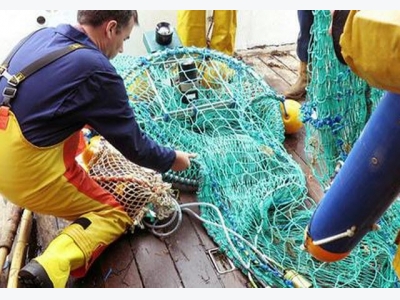Tech start-up claims to reduce bycatch by up to 90% using LEDs

Tech start-up SafetyNet Technologies claims to be able to reduce bycatch in certain fisheries by as much as 90 percent by using simple light emitting devices.
The company is in the early stages, currently crowdfunding in a bid to get its light system into the commercial phase, but it has already undergone some successful trials with the likes of Young’s Seafood and the UK government’s Centre for Environment Fisheries and Aquaculture Science (CEFAS).
“It’s a project we’ve been working on and hoping to progress further -- we’ve been using light in different commercial fishing gears to look at how we can reduce bycatch that is associated with each of the gears,” Dan Watson, founder and CEO of SafetyNet Technologies, told IntraFish.
“It’s been really effective -- for example we’ve had some reduction in the North Sea of up to 60 percent in the nephrops fishery.”
There are people around the world trying similar things, most notably Bob Hannah, Stephen Jones and Mark Lomeli's LED experiments to remove Euchalon bycatch from the Oregon shrimp fishery, which has seen a reduction of up to 90 percent in bycatch.
“So we know it’s possible but what we’ve been doing is trying to take it from the experimental phase into the commercial stage," Watson said. "This means 'product-ize' it and make it so fishing crews can actually use it in their day-to-day practice and affect some of the industry wastage.”
SafetyNet Technologies has been trialing different types of lights and different colors to test effectiveness.
According to Watson the specification of the light is fairly important, whether it’s the wavelength or brightness, the way it flashes, and also where it is attached to the gears.
“There have been lots of different experiments going on with things like sea birds, turtles, and it seems to make a difference to pretty much all of them depending on how it’s used,” said Watson.
“But it’s down to how different species see different types of light, and also how you illuminate the gears so they can see different aspects in the darkness they might not otherwise see.”
The SafetyNet team is looking at how to increase escapement by either guiding a fish toward or away from a particular escape route, but it is also possible to tune the light so only particular species can view it.
“Fishermen who have tried it are really impressed,” said Watson. “In the case of Bob Hannah in Oregon within the season fishermen had gone out and bought $2,000 (€1,794) worth of lights each to go and implement it in their fishery to immediately reduce the bycatch, so they seem to take to it really fast.”
According to Watson, selectivity gear is becoming increasingly popular because of regulations such as the discard ban coming in.
“So now it has an actual financial impact on profit margins, selectivity measures are useful,” he said.
“We’re still doing trials to understand the exact economic impact of this but it seems like it will be useful just from the basics we’ve done so far.”
The company has a skeleton staff, and is very much in start up mode, Watson said. Up to this point it has been dependent on EU funding such as Horizon 2020 and philanthropic grants, but Watson has been working on the concept for the past eight years.
While the concept has been proven so far for species such as eulachon in Oregon, and sea turtles and sea bird bycatch in gillnets, there is also a project in Aberdeen looking at how to get flatfish to escape from a round fish target fishery, said Watson.
“So it’s across the board, lots of interesting trials going on. Part of our goal is to provide the technology to allow those to happen faster," he said.
Có thể bạn quan tâm
 Vietnam’s aquatic product growth likely to be challenged in 2017
Vietnam’s aquatic product growth likely to be challenged in 2017 Vietnam’s aquatic sector will likely find it hard to realize the growth target of US$7.4 billion this year given international economic integration, tougher
 Australia agrees to re-import processed shrimps from Vietnam
Australia agrees to re-import processed shrimps from Vietnam The Australian Department of Agriculture and Water Resources has received a document from the National Agro-Forestry-Fisheries Quality Assurance Department
 Australia lifts ban on VN uncooked shrimp
Australia lifts ban on VN uncooked shrimp Australia has lifted the ban it imposed in January on uncooked Vietnamese shrimp products. Vietnamese companies may resume importing raw